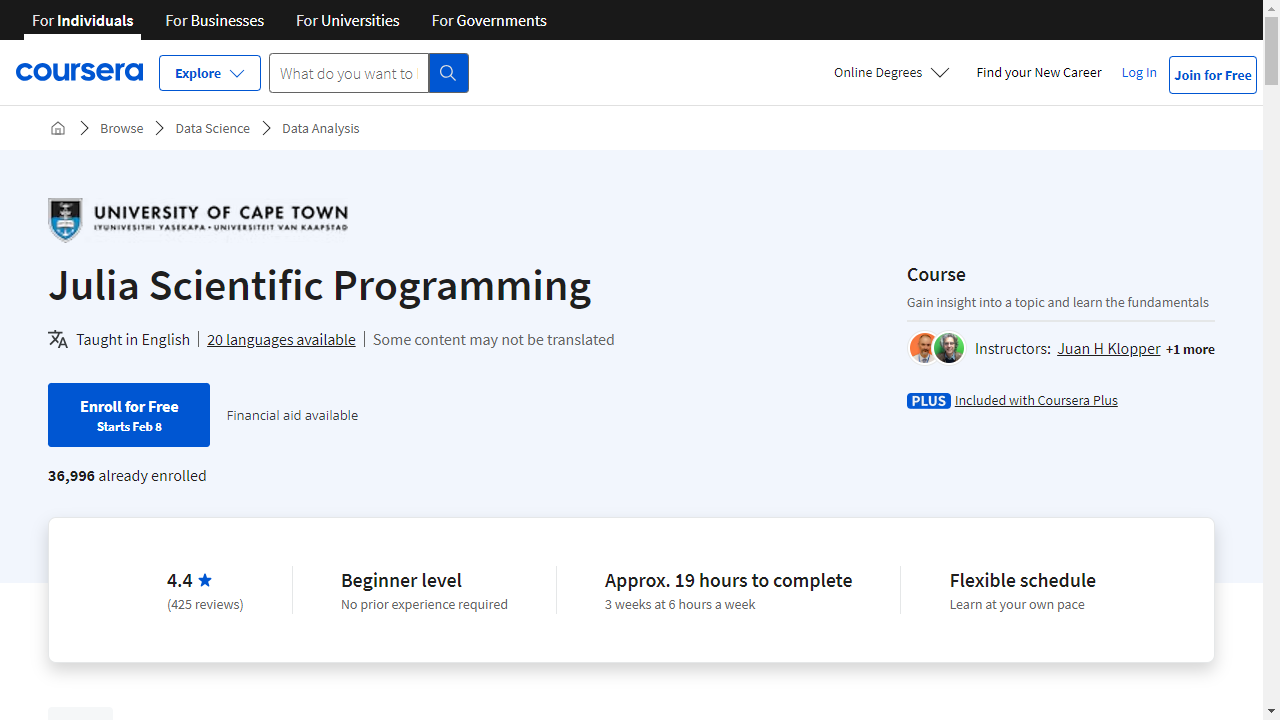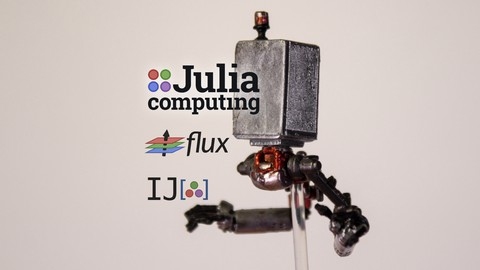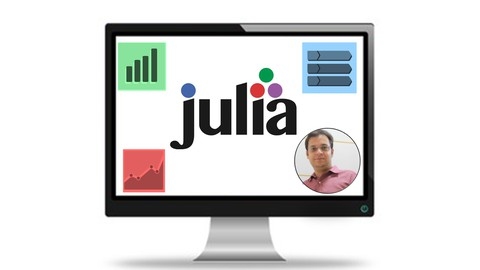Julia programming is a high-level, high-performance language that excels in numerical and scientific computing.
Its speed rivals that of C and Fortran, while maintaining the ease of use of Python or MATLAB.
By learning Julia, you’ll be able to write faster, more efficient code for tasks like data analysis, machine learning, and scientific simulations, opening up opportunities in fields like data science, finance, and research.
Finding the right Julia programming course can be a challenge, especially with the language’s growing popularity and diverse range of applications.
You might be searching for a course that provides a solid foundation in the language, covers relevant libraries and tools, or perhaps focuses on a specific application area like data science or machine learning.
Based on our research, we’ve found that Julia Scientific Programming on Coursera stands out as the best course overall.
This course offers a comprehensive introduction to Julia, covering fundamental concepts like data types, control flow, and functions, while also delving into practical applications in scientific computing, data manipulation, and visualization.
It strikes a great balance between theory and practice, making it an excellent choice for learners of all levels.
While Julia Scientific Programming is our top recommendation, several other fantastic Julia courses cater to different learning styles and preferences.
Continue reading to explore our curated list of top Julia courses, categorized to help you find the perfect fit for your needs and goals.
Julia Scientific Programming
Provider: Coursera
This Julia Scientific Programming course on Coursera equips you with the ability to utilize Julia for scientific applications.
You begin with the basics, understanding how to use the Julia REPL and write code using variables, functions, and logical expressions.
The course teaches you to install and leverage tools like Jupyter Notebook and Julia VS Code Extension to enhance your coding efficiency.
The course seamlessly transitions from foundational concepts to practical applications.
You will handle real-world data, like the 2014 Ebola epidemic dataset, to learn data manipulation, visualization using the Plots package, and building predictive models like the SIR model.
You will work with for loops, date-time formats, and CSV files, gaining hands-on experience in data wrangling.
Building upon these skills, you delve deeper into data analysis by learning about descriptive and inferential statistics.
You will create visualizations to interpret and communicate your findings effectively.
The course introduces you to packages like DataFrames, empowering you to organize and analyze large datasets.
Programming with Julia
Provider: Udemy
This “Programming with Julia” course begins with the background and rising popularity of Julia.
You will learn about the necessary tools like the Julia REPL and how to install Julia on Windows and Linux using juliaup.
You will also discover how to choose an appropriate editor or IDE for writing your Julia code.
The course then covers the basics of Julia programming, including variables, data types, and operations.
You will learn about integers, floating-point numbers, strings, and arrays, and how to perform operations like addition, subtraction, and multiplication.
The course also covers data structures like tuples, dictionaries, and sets.
Next, you will discover how to use conditional statements and loops to control the flow of your programs.
You will learn to use “if,” “else,” and “elseif” statements to make decisions in your code and “for” and “while” loops to repeat actions.
You will also learn about functions and methods, which let you create reusable blocks of code.
The course will introduce you to multiple dispatch, a powerful feature of Julia that allows you to write functions that work with different data types.
You will then explore more advanced concepts, including modules, packages, and metaprogramming.
Modules and packages help you organize code and reuse it across projects.
Metaprogramming lets you write code that can generate or manipulate other code.
Finally, you will explore streams and networking, covering file handling and TCP/IP networking.
You will also learn about parallel programming, enabling you to write faster code by using multiple processors.
Julia Programming Language - From Zero to Expert
Provider: Udemy
This course takes you from knowing nothing about Julia to writing your own programs, doing cool data science stuff, and even building your own AI.
You begin by installing Julia on your computer.
It doesn’t matter if you’re using Windows, MacOS, or Linux, the course helps you get set up.
You’ll learn how to use Jupyter notebooks, which are like digital notebooks for writing and testing code.
The course then teaches you the basics of how to write code in Julia.
You’ll learn about variables (which are like containers for information), how to do math and logic operations, and how to control the flow of your code.
You’ll also discover how Julia works with data, learning about lists, arrays, and other ways to organize information.
You’ll even see how Julia’s unique features make it better for certain tasks than other languages like Python or R.
One of the coolest things you’ll discover is how good Julia is at handling matrices, which are like grids of numbers.
You’ll use them for all sorts of data science and machine learning tasks.
Speaking of which, you’ll dive into the world of data science with Julia, learning how to make plots and charts, work with data from files, and even handle really big datasets.
You’ll see how Julia can be used to group similar things together (like houses on a map) and make predictions based on data.
The course then takes you into the exciting world of deep learning, where computers learn from data.
You’ll use a tool called Flux to build your own neural networks, which are like the brains of AI systems.
You’ll even use Google Colab, a free online tool, to access powerful computers for training your AI models.
You’ll even learn about GANs, which are special AI models that can be used to create new images or other types of data.
Julia Programming For Data Science & Machine Learning: Julia
Provider: Udemy
This Julia programming course on Udemy is perfect if you want to learn how to use Julia for data science and machine learning.
You’ll begin by installing Julia on either Windows or Linux and setting up your coding environment using Jupyter Notebook.
The course then dives into the basics of Julia, teaching you how to write code, work with variables, and understand essential data structures like arrays and dictionaries.
You will learn how to control the flow of your code using conditional statements and loops, which are fundamental programming concepts.
You’ll then move on to data analysis with Julia, learning how to use DataFrames, which are like powerful spreadsheets for organizing and analyzing data.
The course will teach you how to import and export data using DataFrames and use the Plots package to create insightful visualizations.
You will then dive into the exciting world of machine learning, exploring algorithms like Linear Regression, Multiple Linear Regression, and Logistic Regression for making predictions.
You’ll also discover unsupervised learning techniques like K-means Clustering, which groups similar data points together.
Finally, you’ll discover how to simplify complex datasets using dimensionality reduction techniques like Principal Component Analysis (PCA).
Julia Programming 2021 [UPDATED]
Provider: Udemy
This Julia Programming course takes you on a journey from the fundamentals to more advanced programming concepts.
You will begin by installing Julia and getting acquainted with the Juno environment—your coding hub for this course.
With your toolbox set up, you’ll delve into the building blocks of programming, starting with variables, data types, and operators.
You’ll learn how to work with strings, manipulating them to make your code more dynamic and user-friendly.
As you progress, you’ll explore the world of data structures—arrays, sets, tuples, and dictionaries—and discover how to leverage them to organize and manage data effectively.
The course then guides you through the essential concepts of control flow, allowing you to create programs that make decisions and execute actions based on specific conditions.
You will master loops, conditional statements, and exception handling, empowering you to write more robust and versatile code.
This course doesn’t just stop at theory.
You’ll get hands-on experience by applying your newfound knowledge to practical projects.
You’ll build a temperature converter, putting your understanding of variables, operators, and control flow into practice.
You’ll then tackle the challenge of creating a Sudoku solver, solidifying your grasp on data structures, algorithms, and problem-solving techniques.
Through these engaging projects, you will not only solidify your understanding of Julia but also gain the confidence to tackle real-world programming challenges.
Also check our posts on:





![Julia Programming 2021 [UPDATED]](/img/best-julia-programming-courses-online/3444710_JuliaProgramming2021UPDATED.jpg)